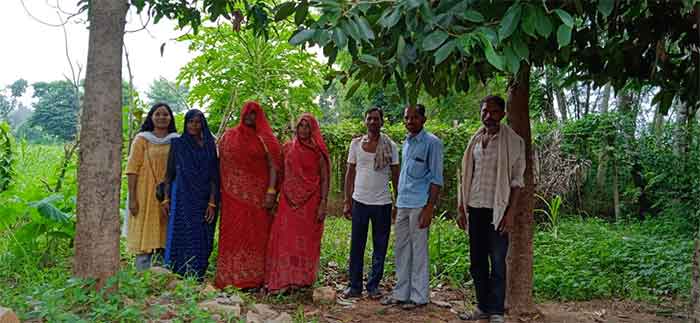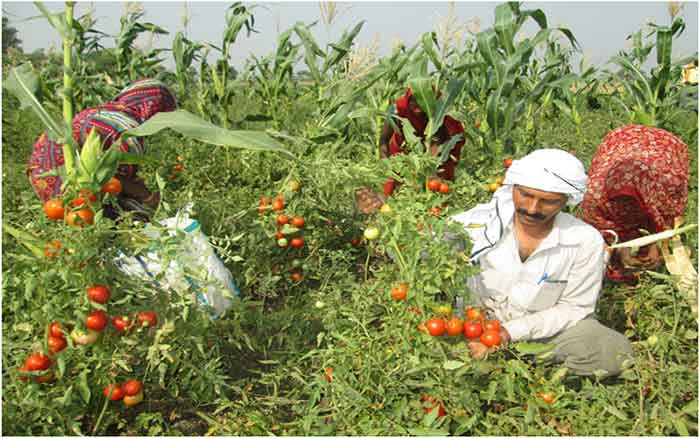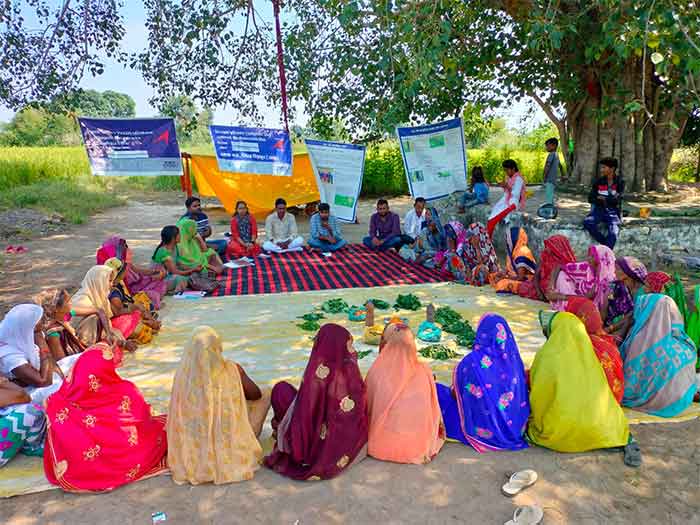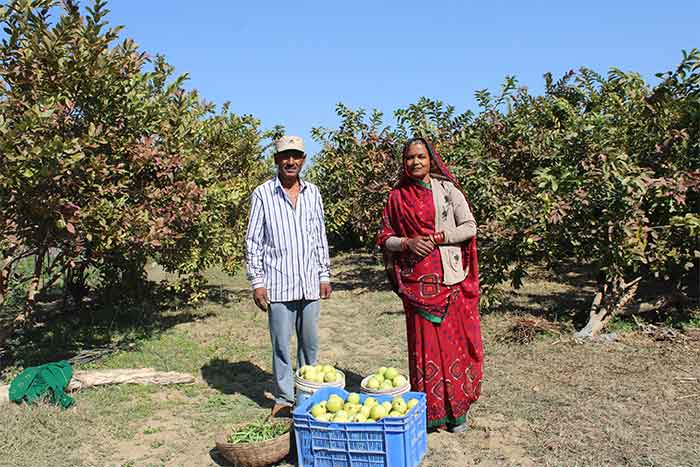
Phulabai is a dalit woman farmer who, together with her husband, Sarman Chadaar, grows guavas and pomegranates on tiny plots of land. On another smaller plot they grow a diversity of vegetable crops with a few papaya trees standing in the middle of these.
When I recently visited their one acre farm in Digaura village of Tikamgarh district (Madhya Pradesh), Phulabai was harvesting guavas for Sarman to take these to the nearby market on a bicycle. Both of them looked very happy with the healthy and abundant yield of guavas and beans. As these are organically grown, sometimes health conscious persons themselves come all the way to their farm to buy their vegetables and fruits.
Both Phulabai and Samran are very satisfied with their farming. As they make their own organic manure and pest repellants on farm, their expenditure on cash purchased inputs are minimal. Once pomegranate harvest starts coming in another year or so, we will be even better off, says Phulabai with a glowing smile.
A lot of thought has gone into their one acre farm which is further divided into three categories. In the first part several varieties of guava are grown together with some legumes inter-cropped during an initial stage. Another portion of the farm is devoted to the pomegranate orchard. The third part, called a multi-layered garden, is the most intricate part of the farm with several creeper crops, root crops, green leafy vegetables and papaya trees being grown in such a way that one plant can be supportive and helpful for another one. A creeper, for instance, can get the support of the stem of another plant, or a smaller plant can grow better in the protective shade of a bigger one.
On the economic side, the diversity of farm produce means that instead of there being just one or two harvesting seasons, some produce or the other is being harvested all the time for sale and self-consumption.
Earlier they were like any other subsistence farming household, struggling for sheer survival on their small farm, but when they came in contact with a program being implemented by SRIJAN social organization for improving livelihoods, their hidden creativity got a chance to flower and today they get many visitors who come to see, admire and learn from the highly creative use they have made on just their one acre of land.
“Earlier we had to take loans for sheer survival, now we can lend money to others if need arises”, says Phulabai with a mix of pride and happiness.
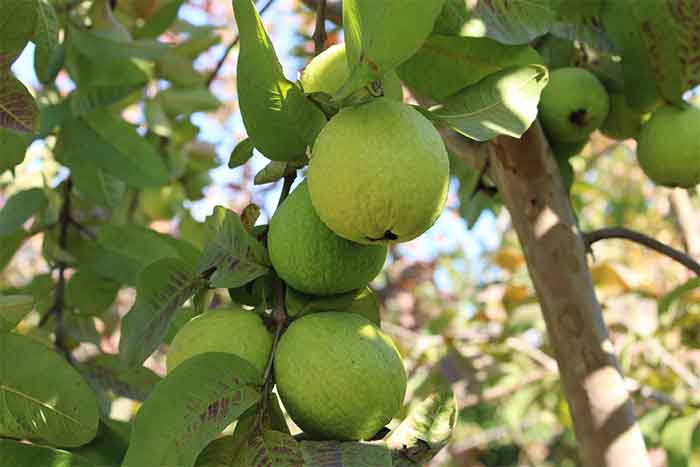
Balchand Aharwal is another dalit farmer who has attracted widespread attention and admiration for making very wise use of his 2 acres of land (in Lithaura Tal village of the same district) for creating small but very beautiful and highly productive multi-layered garden and orchard. As he was an early starter, in his case pomegranates are also being harvested, along with guavas, papayas and a host of vegetables. “This adds greatly to our family’s nutrition and in addition we have a steady, year-round flow of cash income as well”, says a beaming Balchand.
Orchards and gardens are generally associated with bigger and more prosperous farmers. However in several villages of Bundelkhand region of Central India several such promising efforts can be seen of farmers from weaker sections, with very small farm holdings of just one to three acres, cultivating gardens and orchards on a part of their small holdings. These efforts have two more important features. These efforts are often led by women farmers and these grow organic produce. These have been initiated by a voluntary organization SRIJAN, its various partner organizations and strengthened by farmers’ producer organizations as well as self-help groups of rural women. A lot of thought has gone into working out the details of multi-layer gardens in terms of local conditions and various constraints of small farmers.
At the same time, in the course of implementation, it has emerged clearly that while small and marginal farmers may have some constraints in terms of resource-base, they also have several strengths in terms of their ability to bring more affectionate caring to their gardens and orchards, plants and trees. They realize that in the situation of their resource constraints, they must try their best to reduce costs, increase yield and produce a diversity of produce with year-round cycle of some sales and income. This brings out the best of their creativity. They keep experimenting in numerous small ways and making improvements on the basis of local factors, apart from the guidance they receive from SRIJAN. While working very hard, they really appear to be enjoying this work. Phulabai and Samran have expanded what was a small hut into a more robust looking and comfortable structure so that they can spend most of their time closer to their orchard and garden.
This augurs well for creating a paradigm of horticulture development which is more suited to the needs and constraints as well as the creative potential of small and marginal farmers. Orchards and gardens are not just for the rich, the poorer and weaker sections too can grow them with loving care in healthier, ecologically protective ways and also get significant nutrition and income benefits from them. The nutrition benefits are particularly important in the hamlets of weaker sections in villages of Bundelkhand region where fruit consumption, and to a lesser extent even vegetable consumption, has been very low in recent times.
Bharat Dogra is Honorary Convener, Campaign to Save Earth Now. His recent books include India’s Quest for Sustainable Farming and Healthy Food, Man over Machine and Planet in Peril.

